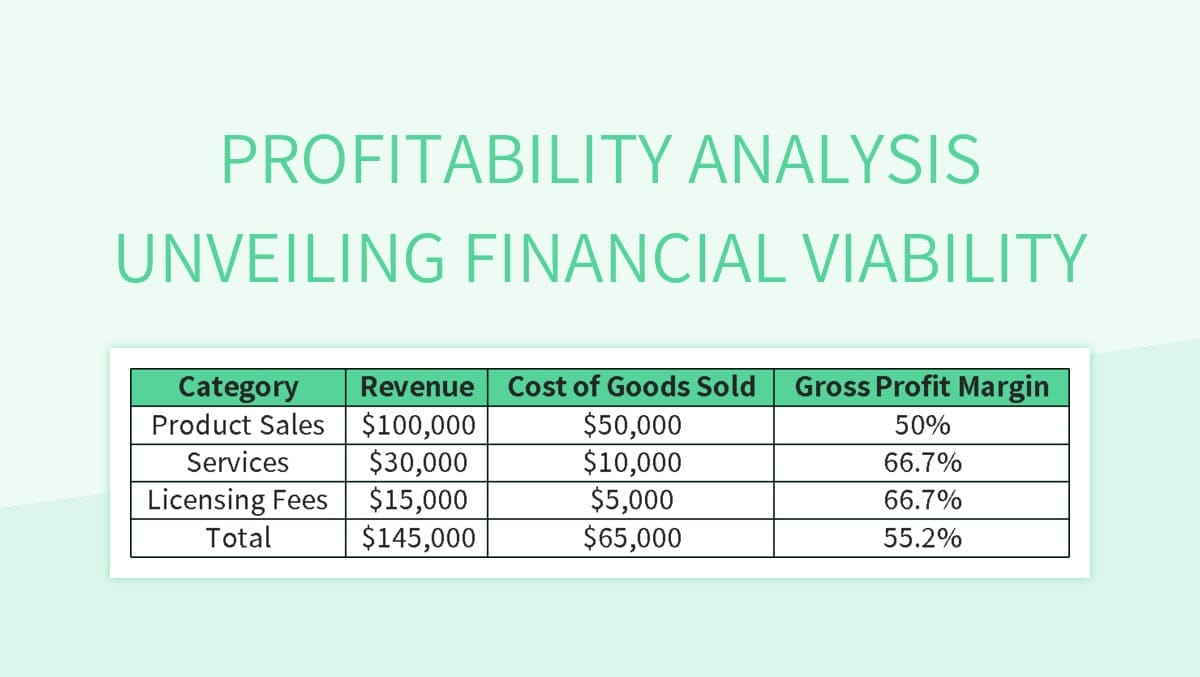The Financial Viability Of Offshore Wind: A Critical Analysis

Table of Contents
High Initial Capital Costs and Financing Challenges
Developing offshore wind farms requires substantial upfront investment. From meticulous site surveys and the procurement of massive wind turbines to complex grid connection infrastructure and challenging installation processes, the initial capital expenditure is staggering. This presents significant challenges in securing financing for these large-scale projects. Lenders carefully assess project risks, considering factors such as construction timelines, technological uncertainties, and the potential volatility of energy markets.
Securing funding often involves a combination of financing options:
- Equity financing: Investment from private companies or government entities.
- Debt financing: Loans from banks or financial institutions specializing in green energy projects.
- Government loans and grants: Direct financial support from national or regional authorities.
- Green bonds: Debt securities specifically designed to finance environmentally friendly projects.
The high initial capital costs are further amplified by several factors:
- High cost of specialized vessels and equipment: Specialized ships and equipment are necessary for transportation, installation, and maintenance of offshore wind turbines, significantly increasing project expenses.
- Complex permitting and regulatory processes: Navigating the bureaucratic hurdles of obtaining permits and approvals can be time-consuming and costly.
- Geopolitical and macroeconomic risks: Global events and economic instability can impact investor confidence and project feasibility.
- Technological risks: New turbine designs and operational challenges can lead to unforeseen costs and delays.
Operational Expenses and Maintenance Costs
Beyond the initial investment, the ongoing operational expenses and maintenance costs associated with offshore wind farms are substantial. Routine inspections, repairs, and component replacements are essential for ensuring the long-term performance and efficiency of these facilities. The remote location of offshore wind farms presents logistical challenges, significantly increasing maintenance costs. Specialized crews, vessels, and equipment are needed to access and service turbines, often in challenging weather conditions.
Consider these contributing factors to operational expenditure:
- Specialized crew and equipment for offshore operations: Highly trained personnel and specialized vessels are required for maintenance and repair, contributing to high labor and equipment costs.
- Regular inspections and preventative maintenance schedules: Regular inspections are crucial to identify and address potential issues before they escalate into major problems, adding to ongoing expenses.
- Costs associated with turbine repairs and component replacements: Repairing or replacing damaged components can be incredibly expensive, particularly for offshore locations.
- Potential for downtime and reduced energy production due to unforeseen issues: Equipment malfunctions or extreme weather events can result in downtime and reduced energy output, impacting overall project revenue.
Government Policies, Subsidies, and Renewable Energy Certificates (RECs)
Government policies play a critical role in shaping the financial viability of offshore wind. Subsidies, tax incentives, feed-in tariffs, and renewable energy mandates can significantly reduce project costs and improve profitability. These policies aim to stimulate investment and accelerate the deployment of renewable energy sources.
Renewable Energy Certificates (RECs) and carbon pricing mechanisms further contribute to the financial attractiveness of offshore wind. RECs are tradable certificates representing the environmental attributes of renewable energy production, generating additional revenue streams. Carbon pricing mechanisms, such as carbon taxes or emissions trading schemes, incentivize the adoption of low-carbon energy sources like offshore wind.
Key aspects of government influence:
- Impact of different subsidy schemes on project profitability: The design and effectiveness of subsidy schemes vary across regions, impacting the financial returns of offshore wind projects.
- Political and regulatory uncertainties impacting long-term investment: Changes in government policies or regulatory frameworks can create uncertainty and discourage long-term investments.
- Regional variations in government support for renewable energy: The level of government support for renewable energy differs across countries and regions, impacting the financial viability of offshore wind projects.
- The evolution of policy and its effects on the financial attractiveness of offshore wind: Policy changes over time can either enhance or diminish the financial appeal of offshore wind investments.
Energy Prices, Market Risks, and Revenue Streams
The profitability of offshore wind farms is closely linked to electricity prices. Fluctuations in energy markets, competition from other energy sources (fossil fuels and other renewables), and technological advancements all pose market risks. Offshore wind projects typically utilize various revenue models to mitigate these risks.
- Power purchase agreements (PPAs): Long-term contracts to sell electricity to utilities or corporations at a predetermined price, providing price stability.
- Merchant power sales: Selling electricity on the wholesale market, exposing projects to price volatility but offering potential for higher returns.
Consider these market factors:
- Impact of volatile energy markets on long-term project returns: Unpredictable electricity prices can significantly impact the financial performance of offshore wind projects over their lifespan.
- Competition from other renewable sources and fossil fuels: Competition from other renewable energy technologies (solar, onshore wind) and fossil fuels can affect electricity prices and the demand for offshore wind power.
- Hedging strategies to mitigate price risk: Using financial instruments to manage price risks and ensure a stable revenue stream.
- Potential for revenue diversification (e.g., co-location of other technologies): Combining offshore wind with other technologies, such as wave or tidal energy, can diversify revenue streams and improve project resilience.
Technological Advancements and Cost Reduction
Technological innovation plays a crucial role in enhancing the financial viability of offshore wind. Improvements in turbine design, manufacturing processes, and installation techniques are continuously driving down costs. Larger, more efficient turbines, optimized manufacturing processes, and innovative installation methods contribute to reduced capital expenditures and improved operational efficiency.
These advancements are key for cost reduction:
- Advancements in turbine technology (size, efficiency): Larger turbines with improved efficiency generate more power, increasing energy production and reducing the cost of electricity.
- Improved manufacturing processes and economies of scale: Mass production and streamlined manufacturing processes reduce the cost of individual components and the overall project.
- Innovations in offshore construction and installation methods: New installation techniques and improved infrastructure reduce installation times and costs.
- The potential for further cost reductions and increased competitiveness: Continuous technological advancements are expected to further reduce the cost of offshore wind, making it increasingly competitive with other energy sources.
Conclusion: The Future of Offshore Wind's Financial Viability
The financial viability of offshore wind is a dynamic landscape shaped by a complex interplay of capital costs, operational expenses, government policies, market forces, and technological advancements. While high initial investments and operational challenges remain, government support, technological innovation, and stable energy markets are essential for ensuring the long-term financial success of offshore wind projects. Understanding the financial viability of offshore wind is crucial for its continued success. Further investment and research in this area are vital to unlocking the full potential of this vital renewable energy source, paving the way for a cleaner, more sustainable energy future. Increased focus on innovative financing models and technological improvements will be key to ensuring the widespread adoption of offshore wind and achieving global climate goals.

Featured Posts
-
 Rumeurs A Rome L Influence Presumee De Macron Sur L Election Papale
May 03, 2025
Rumeurs A Rome L Influence Presumee De Macron Sur L Election Papale
May 03, 2025 -
 Fortnites Wwe Collaboration Obtaining Cody Rhodes And The Undertaker Skins
May 03, 2025
Fortnites Wwe Collaboration Obtaining Cody Rhodes And The Undertaker Skins
May 03, 2025 -
 Check The Winning Lotto Numbers Saturday April 12th Draw
May 03, 2025
Check The Winning Lotto Numbers Saturday April 12th Draw
May 03, 2025 -
 Rome Soupcons De Complot Macronien Pour Le Conclave Papal
May 03, 2025
Rome Soupcons De Complot Macronien Pour Le Conclave Papal
May 03, 2025 -
 Obtaining Fortnites Wwe Skins A Step By Step Guide Cody Rhodes And Undertaker
May 03, 2025
Obtaining Fortnites Wwe Skins A Step By Step Guide Cody Rhodes And Undertaker
May 03, 2025
